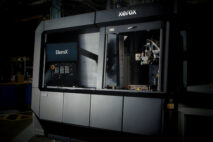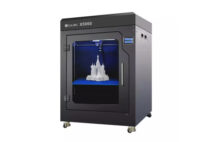At a recent event, I was asked if I thought 3D printers would ever become a consumer product. The person asking the question was surprised by my answer: 3D printers are already a consumer product.
A few weeks later, the same topic came up in a Twitter conversation. One of the participants was doubtful that 3D printers would ever become consumer products because he or she didn’t see consumers acquiring the proper design skills. That person was both right and wrong: Right because most consumers don’t have the motivation or patience to learn 3D design principles and tools. Wrong because they don’t need to.
I think I know why some people resist the idea of a consumer 3D printing market. To them, 3D printers are not consumer products unless every home will have one. 3D printers might never match iconic consumer products like TVs, smartphones, and computers in popularity, but that doesn’t mean they are not consumer products.
Here’s why I think it’s clear that desktop 3D printers made the transition from the hobbyist/DIY market to the consumer.
Many desktop OEMs see consumers as a key customer segment. In fact, several of them have a variation of “a 3D printer in every home” as part of their mission statements. Others are segmenting their product lines to distinguish consumer models from hobbyist, professional, or industrial models.
Competition among desktop OEMs for consumers is heating up, and you have to look no further than the Consumer Electronics Show (CES) held earlier this month for evidence. Companies that initially targeted the hobbyist market are introducing more refined models packaged to appeal to consumers. Robo 3D, for example, offers specialty materials designed for the consumer market along with access to ready-to-print content.
New companies are targeting consumers out of the gate. Well-known consumer brand Polaroid announced an agreement with Environmental Business Products (EBP) to sell 3D printers they will produce under the Polaroid brand. Korean OEM Former’s Farm introduced a specialized 3D printer designed to make lithopanes, or 3D relief images, from 2D images. The company claims the process is as simple as using a standard hardcopy printer.
Nearly every large retail outlet from Amazon to Walmart now offers a wide selection of desktop 3D printer brands, supplies, and accessories. Most sold 3D printers a year ago or earlier, but the scope of offerings has increased significantly, and that’s ignoring the brands that use Amazon and other online retailers as a platform to sell directly.
Many OEMs offered incentives to drive sales this past Christmas, but I have not seen any data on Q4 sales from last year. The Wohlers Report shows that nearly 140,000 sub-$5,000 fused deposition modeling (FDM) printers—by far the most common 3D printing technology sold to consumers—were sold in 2014. That’s nearly double from 2013, and it’s unlikely all that growth came from the hobbyist market.
Consumer Market Effect on the Channel
I see the emergence of the desktop 3D printer consumer market as a positive for the reseller channel. By and large, the market for FDM printers has been undefined—one size fits all whether it’s consumer, education, or business. Now that OEMs are starting to specialize for the consumer market, resellers can settle on the models most appropriate for their customers and leave the low-end, low-margin models to the retailers.
As OEMs continue to build and define their product lines by market, resellers will have an easier time steering price-sensitive business accounts toward more expensive and more appropriate models. “You don’t want that model. It’s for consumers,” they might say. “Let me show you something better suited for your needs.”
A good case in point is 3D Systems. When it decided to stop production of its bottom-of-the-line Cube system, it put its resellers in a better position to move price-sensitive customers up to the CubePro. Their resellers were making little or no money on the Cube, so it really won’t be missed by them (see “What’s the Impact of the End-of-Life for the 3D Systems Cube on Reseller Channel: Not Much”).
For resellers and their customers, it is about value. OEMs will add value by specializing and optimizing their products for each market segment. The emergence of the consumer market makes it easier for that to happen.






